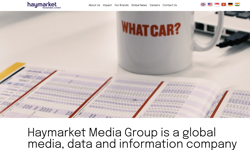US B2B’s have taken a nasty pummelling in recent years. Total B2B media spend (magazines and trade shows) dropped by 13% in 2001 and 9% in 2002, according to the investment firm Veronis Suhler Stevenson. And, although B2B spend has since begun to creep back up, few believe that the old advertising boom levels will be seen again — especially now that this segment is faced with competition of an unprecedented nature from search engines and other thriving new online information sources.
Still, as Hemingway no doubt observed somewhere along the line, a good thrashing can sometimes help one focus on the right things.
And everyone knows that these businesses are now in the process of transforming from hugely advertising-dependent publishing companies to media-neutral, multi-revenue-streamed purveyors of "rich" information. But how far along the curve are they, really?
The answer seems to be that, as with all transformations — no matter how necessary for survival or how sound the theory behind them — the process is proving rather painful.
More talk than action
"I have a somewhat jaundiced view of this," said Malcolm Netburn, founding partner of Netburn McGill, a media consulting firm, during a recent management panel discussion at the National Trade Circulation Foundation in New York City. Netburn, who recently took a year-and-a-half leave from his consulting practice to act as president of a $50 million B2B company, says there’s still more talk than action on this score.
"There’s lip service to being integrated, diversified and media-neutral, but we collectively have not made the commitment, because it’s risky," he observed. "It means taking a leap and having faith that you’re ultimately going to end up in a better place. The price of entry is to have the technology and — though I hate to say it publicly — to be willing to forgo going after the last ad dollar in order to begin investing in some other revenue sources. But most of the executives in charge today have come up through advertising. And, at the end of the day, whether it’s a public company or not, it’s still about advertising."
In this respect, upstarts have some advantages. "The real problem for our industry is that we think we’ve made a lot of progress because we’re tightly tethered to traditional ways," Netburn said. "If you’re tethered to something and you go 10 feet, that seems like a long way. But people starting new information companies today aren’t tethered to the print culture, its traditions or its executives. They’re not 10 feet from that — they’re not even seeing it as the centre. They’re completely flexible to do things quickly and differently."
Matter over mind
Gary Lynch, president of MARHedge, a leading publisher / conference producer in the hedge fund market, sees it more as a question of matter over mind. "I think the whole mindset has shifted to being information providers through many channels. The problem is going to be resources," he said. "I work for a relatively small company. We’ve been around since 1910, and we compete with companies with huge resources. We’re just now building an infrastructure to enable us to do Web-based products. We understand that we have to do it, but our ability to do it is rooted in the infrastructure and people we have to support that. All B2B’s are thinking this way, but size probably has much to do with how far along the curve you are. I would guess that there are more companies that aren’t doing it effectively than are."
This dose of realism doesn’t mean that progress isn’t being made, or that the prospects are grim. "It’s a paradigm shift that we’re still catching up with," said Netburn. "For many years, B2B’s were gatekeepers. We were the most effective way to get into an industry. Now, there are many gates to go through, and we have to figure out how we make the shift to being a participant among a wide range of other conduits to an industry. We need to figure out how we provide something innovative and unique that tells people that they should be addressing the industry through us. We have a great opportunity, because we typically still have the best name as a respected participant within an industry. This won’t last forever, but at present, whatever we’re selling in our brand name carries the value equation that the publication has had."
"Because we sort of ‘own’ our markets through our B2B print umbrella products, the opportunities to penetrate deeper and provide quality data through very segmented, niche products — to become part of the day-to-day workflow for our customers — are almost limitless," agreed Lynch.
"The biggest challenge - and biggest opportunity - is figuring out how a given company can profitably diversify today," summed up Joseph Pramberger, president of Associated Business Publications International. "For us, it means leveraging global opportunities through digital distribution, diversifying our product range and strengthening our brand. In addition to a monthly publication [NASA Tech Briefs], we’re now sending three newsletters a week, updating our Web site every day, doing Webinars — getting our brand name out there on an hourly basis, not a monthly basis."
FEATURE
B2B growing pains
Just how far have US B2Bs gone in reengineering themselves for the 21st century? Limited resources, caution and print-focused attitudes are holding some back. BPA’s Karlene Lukovitz takes soundings from senior publishing execs.










